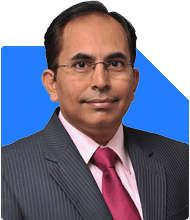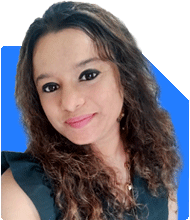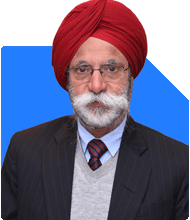I am a 34-year-old individual with a balance of 1.75 crore INR in my savings account. I have no outstanding debts and am looking to invest this amount wisely.
My investment goals are twofold: firstly, to secure 1 crore INR for my daughter's future when she turns 18, and secondly, to generate a monthly income to cover my expenses, which currently amount to 85,000 INR per month.
I am willing to allocate my investment across different risk profiles as follows: 25 lakhs INR in high-risk investments, 50 lakhs INR in medium-risk investments, and the remaining 1 crore INR in moderate-risk investments.
Could you please advise me on a comprehensive investment strategy considering my goals and risk profile? Specifically, I am seeking guidance on asset allocation, investment vehicles, and any other considerations to achieve both capital growth and income generation.
Ans: Thank you for sharing your detailed financial goals and risk profile. Let's create a comprehensive investment strategy tailored to your needs and preferences. Your primary objectives are to secure Rs 1 crore for your daughter's future and generate a monthly income of Rs 85,000.
1. Understanding Your Financial Goals and Risk Profile
Your investment goals are twofold:
Securing Rs 1 crore for your daughter's future when she turns 18.
Generating a monthly income of Rs 85,000 to cover your current expenses.
You are willing to allocate your investment across different risk profiles:
High-risk investments: Rs 25 lakhs
Medium-risk investments: Rs 50 lakhs
Moderate-risk investments: Rs 1 crore
This diversified approach helps balance potential high returns with stability and safety.
2. Asset Allocation Strategy
Asset allocation is crucial in achieving your financial goals. Here is a recommended strategy:
High-Risk Investments: Rs 25 Lakhs
High-risk investments have the potential for high returns but come with significant volatility. Consider the following options:
Equity Mutual Funds: These funds invest in stocks and have the potential for high returns. Choose actively managed funds with a good track record.
Stocks: Direct investment in stocks of well-researched companies. Focus on growth stocks in emerging sectors.
Sectoral Funds: These funds invest in specific sectors like technology or healthcare, which can offer high growth.
Medium-Risk Investments: Rs 50 Lakhs
Medium-risk investments offer a balance between risk and return. Consider these options:
Balanced Mutual Funds: These funds invest in a mix of equity and debt instruments, providing moderate growth with lower volatility.
Corporate Bonds: Investment-grade corporate bonds offer higher returns than government securities with moderate risk.
Hybrid Funds: These funds invest in a mix of equity and debt, offering a balanced approach to growth and income.
Moderate-Risk Investments: Rs 1 Crore
Moderate-risk investments prioritize safety while providing reasonable returns. Consider these options:
Debt Mutual Funds: These funds invest in government securities, corporate bonds, and other debt instruments, providing stable returns.
Fixed Deposits: Bank fixed deposits are safe and offer guaranteed returns, though the interest rates are lower.
PPF (Public Provident Fund): A long-term investment with tax-free returns and government backing, ensuring safety and moderate returns.
3. Investment Vehicles and Their Benefits
Equity Mutual Funds
Equity mutual funds are managed by professionals who invest in a diversified portfolio of stocks. They offer the potential for high returns over the long term. Actively managed funds tend to outperform passive index funds due to professional management.
Stocks
Direct investment in stocks can be rewarding but requires extensive research and monitoring. Investing in well-established companies with a strong track record can help achieve significant capital appreciation.
Sectoral Funds
Sectoral funds focus on specific industries with high growth potential. These funds can provide high returns if the chosen sector performs well but can also be volatile.
Balanced Mutual Funds
Balanced mutual funds provide a mix of equity and debt, balancing risk and return. They are suitable for medium-risk investors seeking growth with lower volatility.
Corporate Bonds
Corporate bonds offer higher returns than government securities and are less volatile than equities. Investing in high-rated bonds ensures moderate risk with steady returns.
Hybrid Funds
Hybrid funds invest in a combination of equity and debt, providing diversification and balanced growth. They are suitable for medium-risk investors.
Debt Mutual Funds
Debt mutual funds invest in fixed-income securities, offering stability and moderate returns. They are suitable for conservative investors.
Fixed Deposits
Fixed deposits are one of the safest investment options, providing guaranteed returns. They are ideal for risk-averse investors seeking stable income.
PPF (Public Provident Fund)
PPF is a long-term investment option with tax-free returns. It is backed by the government, ensuring safety and moderate returns.
4. Generating Monthly Income
To generate a monthly income of Rs 85,000, consider a combination of the following:
Systematic Withdrawal Plan (SWP): From your debt and balanced mutual funds, you can set up an SWP to withdraw a fixed amount regularly. This provides a steady income while keeping your principal invested.
Dividends from Equity Investments: Dividend-paying stocks and mutual funds can provide a regular income. However, dividends can fluctuate based on company performance.
Interest from Debt Investments: Fixed deposits, corporate bonds, and debt mutual funds provide regular interest income. This can be a reliable source of monthly cash flow.
5. Securing Rs 1 Crore for Your Daughter's Future
To secure Rs 1 crore for your daughter's future, focus on long-term growth investments:
Equity Mutual Funds and Stocks: Allocate a significant portion of the high-risk and medium-risk investments here. Over a long period, equities tend to outperform other asset classes.
Systematic Investment Plan (SIP): Continue or start SIPs in equity mutual funds. SIPs help in averaging out market volatility and build a substantial corpus over time.
Child-specific Mutual Funds: Consider investing in mutual funds designed for children's future needs. These funds have a lock-in period and provide disciplined savings.
6. Review and Rebalance Your Portfolio
Regularly reviewing and rebalancing your portfolio ensures it remains aligned with your goals and risk tolerance. Here are some steps to consider:
Annual Review: Evaluate the performance of your investments annually. Make adjustments based on changes in market conditions and your financial goals.
Rebalancing: Adjust the allocation between high-risk, medium-risk, and moderate-risk investments to maintain your desired risk profile.
Diversification: Ensure your portfolio is diversified across different asset classes to minimize risk and maximize returns.
7. Other Considerations
Emergency Fund
Maintain an emergency fund equivalent to 6-12 months of your expenses. This fund should be easily accessible and invested in liquid instruments like savings accounts or liquid mutual funds.
Tax Planning
Consider the tax implications of your investments. Opt for tax-efficient instruments and strategies to minimize your tax liability. ELSS funds offer tax benefits under Section 80C, while PPF provides tax-free returns.
Financial Education
Stay informed about financial markets and investment options. Continuous learning helps make better investment decisions. Consider consulting with a Certified Financial Planner (CFP) for personalized advice.
Conclusion
You have a substantial amount to invest and clear financial goals. A diversified approach across high-risk, medium-risk, and moderate-risk investments will help you achieve your objectives. Regularly review and rebalance your portfolio to stay on track. Prioritize your daughter's future and your monthly income needs while considering tax efficiency and emergency preparedness.
Investing wisely today secures your financial future and ensures you can achieve your goals with confidence.
Best Regards,
K. Ramalingam, MBA, CFP,
Chief Financial Planner,
www.holisticinvestment.in






















